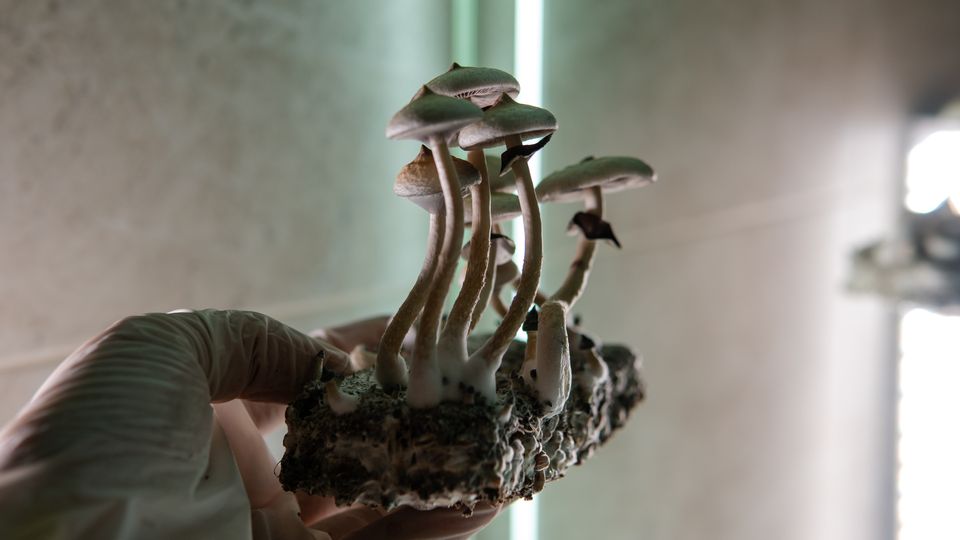Magic Mushroom Genomes Reveal Route to “Designer” Fungi
A community-led study has revealed a trove of genomic data for over 100 cultivars of “magic” mushrooms.

Complete the form below to unlock access to ALL audio articles.
A community-led study has revealed a trove of genomic data for over 100 cultivars of “magic” mushrooms. The research, published in Current Biology, details how domestication of Psilocybe cubensis has reduced the genetic diversity of the mushroom. The work could help growers produce new cultivars with different properties.
Selective breeding with shrooms
To turn wild nature into products for human consumption, agriculturalists have carefully bred particular traits into plants. The crisp taste of a Granny Smith apple or the starchy consistency of a Russet potato are features that are retained throughout the cultivar. That same process has happened with other natural products. “In the case of magic mushrooms, this has led to highly homozygous genomes,” says Alistair McTaggart, a researcher at the University of Queensland.
This means that there is relatively little variation in the genetic code of cultivated, commercial cultivars of magic mushrooms. In the new study, McTaggart and colleagues examined the genomes of 86 such cultivars.
McTaggart says that the lack of variation has impacts on the production of the psychoactive molecules that make magic mushrooms magic. “Reduced genetic diversity in cultivars of magic mushrooms should stabilize psychoactive effects as there are fewer opportunities for variation in the genes that produce psilocybin,” he explains.
Explaining the magic of mushrooms
The magic of magic mushrooms originates in a defense mechanism. Researchers have previously tied the rise of psilocybin to environments where the fungi have to evade being consumed by mushroom-munching insects. This work has proposed that the effect of psilocybin on these predators includes the suppression of appetite. This has been a long evolutionary process, says McTaggart: “Psilocybin and its analogs would be honed for a specific niche over millennia.”
How genetic diversity in psilocybin genes contributes to the subjective experience of a magic mushroom trip remains unclear, McTaggart explains. But genetically similar mushroom cultivars won’t help science answer that question. That’s why it’s useful that McTaggart’s study was conducted with a little help from underground Australian mushroom growers. “People in Australia can be penalized for possessing magic mushrooms as psilocybin is a controlled substance,” McTaggart explains.
Despite the legal risks, which McTaggart calls “draconian”, collectors from around Australia together contributed an additional 38 wild psychedelic mushroom isolates. “Nearly all of the citizen scientists that took this risk are co-authors, but some chose to remain anonymous,” says McTaggart. The analysis showed that, unlike the commercial cultivars, the naturally occurring fungi were genetically diverse. The natural fungi likely went through a bottleneck event when they were first introduced to Australia. During a bottleneck event, genetic diversity collapses due to a low population number. However, the natural populations appear to have bounced back since the bottleneck, restoring their diversity. McTaggart hopes that studying these more varied mushrooms could reveal more about how genetic diversity alters psychedelic trips.
Designer mushrooms
To this end, McTaggart has joined a startup, Funky Fungus, which hopes to explore the potential of designer mushrooms.
While McTaggart doesn’t expect these custom fungi to have additional side effects that might affect their safety, he points to other species of magic mushrooms as an indicator of the variety present in the world of psychedelic fungi. A separate study of Psilocybe subaeruginosa – a sister mushroom to those analyzed in the current research – has shown that some genotypes can induce a “temporary paralysis”. With support from his community of citizen scientists, McTaggart is planning to tackle other mushroom mysteries: “I look forward to improved knowledge on how genetic diversity in the genes that produce psilocybin impacts the experience and how it translates in natural ecosystems,” he concludes.
Reference: McTaggart AR, McLaughlin S, Slot JC, et al. Domestication through clandestine cultivation constrained genetic diversity in magic mushrooms relative to naturalized populations. Current Biology. 2023;33(23):5147-5159.e7. doi:10.1016/j.cub.2023.10.059


